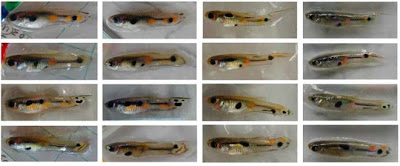
Wired reports on Nature's roundup of interesting and elegant instances of evolution, including the discovery of calmodulin expression as the source of variation for the beak of the finch, the morphological trends in tooth formation, and frequency-dependent survival processes:
Since natural selection favors traits that increase fitness, it seems that populations should eventually become genetically homogeneous. But evolution isn't so one-dimensional: When researchers adjusted the color frequencies of wild guppy populations in Trinidad, they found that unusual variants — regardless of color — had higher survival rates. This is called frequency-dependent survival: selection favoring the rare and disfavoring the common, preventing a long-term homogeneity that — no matter how beneficial in the short term — might someday prove disastrous.
Nature's collection is in honor of the upcoming 200th anniversary of Darwin's birth.
No comments:
Post a Comment